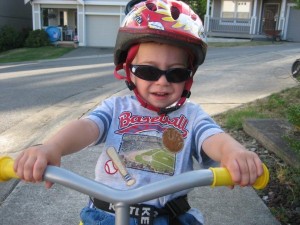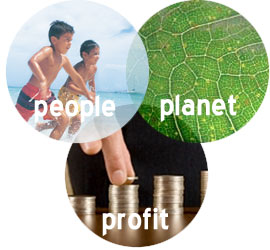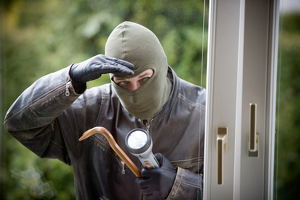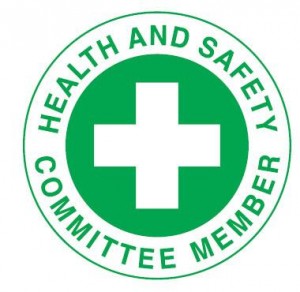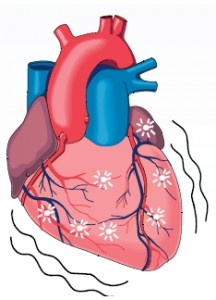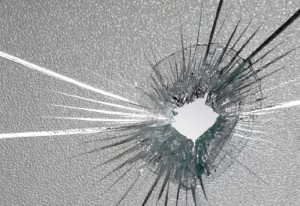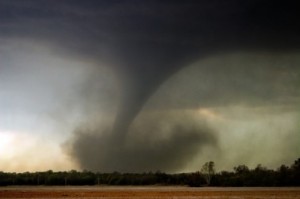 There is no such thing as guaranteed safety inside a tornado. Freak accidents happen; and the most violent tornadoes can level and blow away almost any house and its occupants. Extremely violent EF5 tornadoes are very rare, though. Most tornadoes are actually much weaker and can be survived using these safety ideas…
There is no such thing as guaranteed safety inside a tornado. Freak accidents happen; and the most violent tornadoes can level and blow away almost any house and its occupants. Extremely violent EF5 tornadoes are very rare, though. Most tornadoes are actually much weaker and can be survived using these safety ideas…
Prevention and practice before the storm:
At home, have a family tornado plan in place, based on the kind of dwelling you live in and the safety tips below. Know where you can take shelter in a matter of seconds, and practice a family tornado drill at least once a year. Have a pre-determined place to meet after a disaster. Flying debris is the greatest danger in tornadoes; so store protective coverings (e.g., mattress, sleeping bags, thick blankets, etc) in or next to your shelter space, ready to use on a few seconds’ notice. When a tornado watch is issued, think about the drill and check to make sure all your safety supplies are handy. Turn on local TV, radio or NOAA Weather Radio and stay alert for warnings. Forget about the old notion of opening windows to equalize pressure; the tornado will blast open the windows for you! If you shop frequently at certain stores, learn where there are bathrooms, storage rooms or other interior shelter areas away from windows, and the shortest ways to get there. All administrators of schools, shopping centers, nursing homes, hospitals, sports arenas, stadiums, mobile home communities and offices should have a tornado safety plan in place, with easy-to-read signs posted to direct everyone to a safe, close by shelter area. Schools and office building managers should regularly run well-coordinated drills. If you are planning to build a house, especially east of the Rockies, consider an underground tornado shelter or an interior “safe room”.
Know the signs of a tornado:
Weather forecasting science is not perfect and some tornadoes do occur without a tornado warning. There is no substitute for staying alert to the sky. Besides an obviously visible tornado, here are some things to look and listen for:
- Strong, persistent rotation in the cloud base.
- Whirling dust or debris on the ground under a cloud base — tornadoes sometimes have no funnel!
- Hail or heavy rain followed by either dead calm or a fast, intense wind shift. Many tornadoes are wrapped in heavy precipitation and can’t be seen.
- Day or night – Loud, continuous roar or rumble, which doesn’t fade in a few seconds like thunder.
- Night – Small, bright, blue-green to white flashes at ground level near a thunderstorm (as opposed to silvery lightning up in the clouds). These mean power lines are being snapped by very strong wind, maybe a tornado.
- Night – Persistent lowering from the cloud base, illuminated or silhouetted by lightning — especially if it is on the ground or there is a blue-green-white power flash underneath.
via Tornado Safety (Online Tornado FAQ).
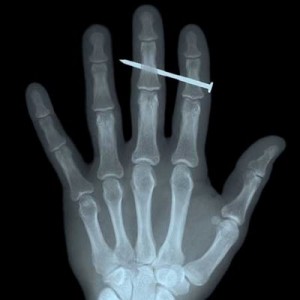 Nail guns have replaced hammers in wood frame construction. They are powerful, easy to operate and boost productivity for nailing tasks. Nail guns are a leading cause of injury among residential carpenters and responsible for an estimated 37,000 emergency room visits each year, of which 60% are occupationally-related. Puncture wounds to the hands and fingers are most common, but more serious injuries and deaths occur using nail guns.
Nail guns have replaced hammers in wood frame construction. They are powerful, easy to operate and boost productivity for nailing tasks. Nail guns are a leading cause of injury among residential carpenters and responsible for an estimated 37,000 emergency room visits each year, of which 60% are occupationally-related. Puncture wounds to the hands and fingers are most common, but more serious injuries and deaths occur using nail guns.
